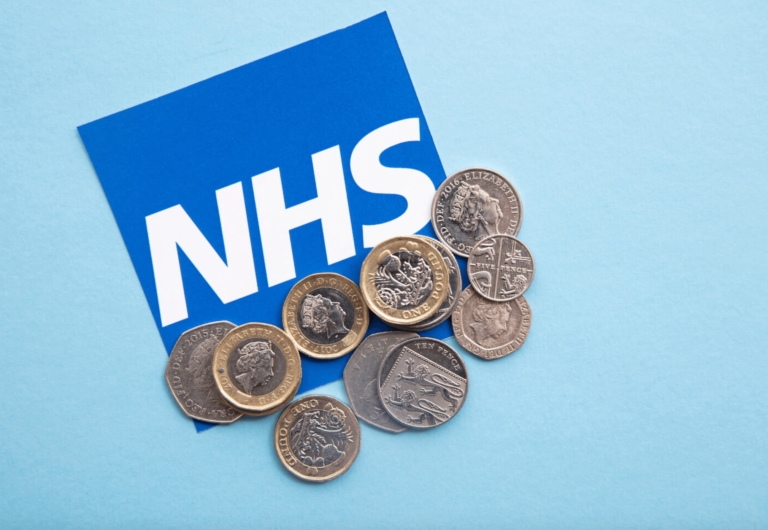
The National Health Service (NHS) in the United Kingdom employs a structured pay system to ensure fairness and consistency across its vast workforce. Central to this system is the concept of “High-Cost Area Supplements” (HCAS), commonly referred to as “fringe payment NHS,” designed to compensate staff working in areas with a higher cost of living. This article delves into the intricacies of fringe payments, clearly understanding their calculation, application, and impact on NHS salaries.
Introduction to NHS Pay Structure
The NHS operates under the “Agenda for Change” (AfC) pay system, which standardizes the pay and conditions for most NHS staff, excluding doctors, dentists, and very senior managers. The AfC system is divided into nine pay bands, each corresponding to specific roles and responsibilities within the NHS. Progression through these bands is typically based on experience, skills, and competencies.
Understanding High-Cost Area Supplements (HCAS)
HCAS are extra payments provided to NHS employees in regions with a significantly higher cost of living. Consequently, these supplements help attract and retain staff in areas where expenses, especially housing costs, are elevated. Additionally, they are divided into three categories Inner London, Outer London, and Fringe areas each offering a different percentage increase on the base salary.
Base Salaries Without HCAS
Understanding the base salaries for each band provides a foundation for calculating the impact of HCAS:
1. Band 2: Starting salary of £22,383.
2. Band 5: Starting salary of £28,407.
3. Band 7: Starting salary of £43,742.
These figures represent the national pay rates without any additional supplements.
Inner London HCAS: 20% Uplift
For NHS staff working in Inner London, the HCAS (Fringe Payment NHS) provides a 20% increase on the base salary, subject to specific minimum and maximum thresholds:
Minimum Payment: £5,414
Maximum Payment: £8,172
For example, a Band 5 nurse in Inner London would receive an additional 20% of their base salary, as long as this amount falls within the specified range.
Outer London HCAS: 15% Uplift
Staff in Outer London areas receive a 15% supplement, with the following thresholds in place:
Minimum Payment: £4,551
Maximum Payment: £5,735
This ensures that employees in these regions are compensated for the higher living costs associated with Outer London.
Fringe Payment NHS Area: 5% Uplift
In designated Fringe areas, a 5% supplement is applied:
Minimum Payment: £1,258
Maximum Payment: £2,122
This modest increase assists staff in areas adjacent to London and other high-cost zones.
Comparative Salary Analysis: With and Without HCAS
To illustrate the impact of Fringe Payment NHS, consider the following examples:
Fringe: £22,383 + 5% (£1,119.15) = £23,502.15
Band 2 (Base Salary: £22,383):
Inner London: £22,383 + 20% (£4,476.60) = £26,859.60 (capped at £26,555 due to maximum threshold)
Outer London: £22,383 + 15% (£3,357.45) = £25,740.45
Band 5 (Base Salary: £28,407):
- Inner London: £28,407 + 20% (£5,681.40) = £34,088.40 (capped at £34,088 due to maximum threshold).
- Outer London: £28,407 + 15% (£4,261.05) = £32,668.05.
- Fringe: £28,407 + 5% (£1,420.35) = £29,827.35.
Band 7 (Base Salary: £43,742):
- Inner London: £43,742 + 20% (£8,748.40) = £52,490.40 (capped at £52,490 due to maximum threshold).
- Outer London: £43,742 + 15% (£6,561.30) = £50,303.30.
- Fringe: £43,742 + 5% (£2,187.10) = £45,929.10.
This comparison shows the financial impact of HCAS on NHS salaries across different pay bands.
Geographic Distribution of HCAS Areas
Certain NHS Trusts qualify for HCAS based on their location. Below are examples of NHS Trusts and their respective HCAS zones:
Inner London NHS Trusts (20% HCAS)
- Guy’s and St Thomas’ NHS Foundation Trust
- King’s College Hospital NHS Foundation Trust
- Barts Health NHS Trust
- Chelsea and Westminster Hospital NHS Foundation Trust
Outer London NHS Trusts (15% HCAS)
- Croydon Health Services NHS Trust
- Epsom and St Helier University Hospitals NHS Trust
- Kingston Hospital NHS Foundation Trust
Fringe Area NHS Trusts (5% HCAS)
- Frimley Health NHS Foundation Trust (Surrey locations)
- Royal Surrey County Hospital NHS Foundation Trust
- West Hertfordshire Hospitals NHS Trust
Knowing the classification of a hospital can help prospective NHS employees determine their expected earnings.
Case Studies: Hospitals with Fringe Payments
To further understand the effect of HCAS, let’s look at specific case studies.
Example 1: Nurse at Frimley Park Hospital (Fringe Area)
- Base Salary (Band 5, 2+ years of experience): £30,639
- Fringe HCAS (5%): £1,531.95
- Total Salary: £32,170.95
Example 2: Senior Nurse at Croydon University Hospital (Outer London)
- Base Salary (Band 6, 3+ years of experience): £35,392
- Outer London HCAS (15%): £5,308.80
- Total Salary: £40,700.80
This highlights how salaries can vary significantly depending on the hospital location.
Financial Implications for NHS Staff
While HCAS provides additional financial support, other factors impact overall earnings, such as:
- Income Tax and National Insurance: The extra salary from HCAS is taxable.
- Pension Contributions: Higher salaries increase pension deductions.
- Cost of Living: Housing, transportation, and general expenses vary by location.
Nevertheless, despite the financial benefits, some NHS staff opt to work outside HCAS zones where living costs are lower, even with a smaller salary.
Frequently Asked Questions (FAQs) on HCAS
What are High-Cost Area Supplements?
HCAS are additional payments given to NHS employees working in areas where the cost of living is higher.
How are HCAS calculated?
HCAS is a percentage (5%, 15%, or 20%) of the base salary, with defined minimum and maximum thresholds.
Which areas qualify for HCAS?
Inner London, Outer London, and certain Fringe areas near London and the South East.
How do HCAS affect pension contributions?
Since HCAS counts as pensionable earnings, contributions increase accordingly.
Are HCAS payments taxed?
Yes, like standard NHS salaries, HCAS payments are subject to income tax and National Insurance.
How often are HCAS rates reviewed?
HCAS rates are periodically reviewed as part of the Agenda for Change pay system adjustments.
Future Outlook: Potential Changes to HCAS
There are ongoing discussions about:
- Expanding HCAS eligibility to more regions due to rising living costs outside London.
- Increasing the percentage of HCAS payments to match inflation.
- Introducing additional regional supplements in areas such as Manchester and Birmingham.
If these changes occur, more NHS staff may receive additional payments to help offset high living costs.
Conclusion
Fringe payments, or High-Cost Area Supplements, are crucial in helping NHS employees manage living costs in expensive areas. By understanding how these payments work, NHS staff can make informed decisions about where to work and how their salary is structured.
As the NHS continues to evolve, keeping up with salary changes and cost-of-living adjustments is essential for ensuring fair compensation for healthcare professionals.
Useful links:
NHS Employer – High Cost Area Supplements (HCAS)
https://www.nhsemployers.org/articles/high-cost-area-supplements-hcas
If you’d like to compare salaries in other countries, here are some helpful resources:
Global Net Pay Calculator: compare take-home pay across countries, understand deductions, and plan smarter for your next career move.



